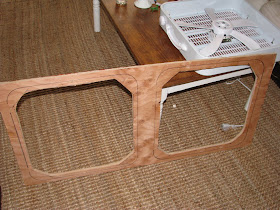- more silver electrode surface area is better. I use Canadian maple leaf coins that I pounded with a sledge hammer to make them oblong. Based on how much of the coins are exposed to the water, I would need 12 gauge silver wire looped down 6 inches and back up 6 inches just to equal the surface area. And never mind the thinner gauges like 16 or 18 gauge. What happens is a certain amount of current is flowing, but with less surface area, current density is too high and makes too much silver per given area. Even though all the particles are the same size when they come off into solution, too much in a given area means they will clump together and make larger particles.
- some form of stirring is necessary. Either manually stirring every few minutes, or having an electric motor to do the work is fine. The easiest is a hot plate like this.This isn't that hot, it is meant to keep coffee warm. You don't want too much heat, it could shatter your glass container.
- There should be a way to monitor current flow. I make sure that I never get over 4 mA. It is interesting. When the current gets to 2 or 3 mA, then I would manually stir for about 5 to 10 seconds and the current would drop again. What is happening is that the silver ions are mostly between the two electrodes and the more silver , the more conductive. By spreading them out by stirring, there is less concentration between the electrodes and the current drops. If I use the heat pad, then stirring doesn't do anything. This proves that the heat is stirring the water enough!
- The more voltage you have, the faster the process starts. But anything over 50 volts can be dangerous. The phone line is nice because it is about 50 volts and limited to 30 mA. With this simple circuit below, I limit the absolute maximum current to about 19 mA (I don't let it get above 4mA though). If I accidentally touch the probes together the red and green leds both light up brightly. Typically, I plug in phone line and when the silver probes are put in the water, the red led will light up to show there is a connection and electrons are flowing. The meter stays all the way down and the green led is off. If the probes aren't touching and the green led comes on and the meter pegs high, that means you don't have pure distilled water(I've accidentally used spring water and this happened). The container of water should be on a hot plate and after awhile( about 1.5 hours per quart) the meter will get up to the high side and the green light will be lit. No stirring needed because of the hot plate.
I placed the circuit in a small tin box:
I used about 25 ohms instead of the 100 ohm potentiometer for my meter shunt. But you have to adjust it so that it reads about 3/4 full scale when your silver is ready. You can use any old meter you find. This one came out of an old microwave detector I found for a dollar in the thrift store.
- Another thing I learned is to not overcook it. I can get about 12 to 15 ppm and it is still perfectly clear. If I go over that, it will start to turn amber color over the next few days.
- Also, you may have a 90% ionic and 10% colloidal solution when you first make it. But after a few days, it seems to settle into about a 70% ionic and 30% colloidal solution. At this point, the ppm meter reading goes down, but the laser tyndel effect goes up from the initial tests.















